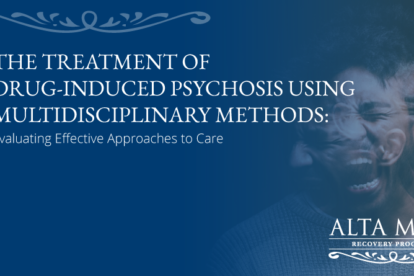Addiction and PTSD: Why Longer Treatment Means Better Outcomes

A growing body of evidence supports the notion that 30-day addiction treatment isn’t enough for long-term remission, and this is particularly true with addictions accompanied by co-occurring disorders like PTSD. By breaking through the 30-day myth and recognizing the complexities of assessing both symptoms and treatment response, you can begin to understand why longer treatment duration leads to better outcomes. However, healing from addiction and PTSD requires continuing care for long-term recovery.
Thirty days. For decades, these two short words have been synonymous with addiction treatment. In many ways, the 30-day treatment duration is welcoming, as it promises recovery in a mere month. What’s a month in comparison to the duration of your addiction? A month sounds good. A month sounds achievable.
The ubiquitous nature of the 30-day addiction treatment means that many are surprised when they learn that 30 days may not be the right treatment duration for their specific situation. However, a growing body of research indicates that most people benefit from longer duration of residential care, and this is particularly true for people struggling with co-occurring disorders such as substance addiction and PTSD.
The 30-Day Myth
The decision to begin addiction treatment doesn’t come easily, and for many, it requires not only facing up to your substance use disorder—often for the first time—but making practical space for treatment in your life. That means rearranging work, finding childcare, or taking time away from school, temporarily leaving behind your everyday life in order to begin the process of healing. It’s no wonder, then, that minimizing time in treatment can be appealing.
“We love quick, tidy solutions in this country. With health problems, in particular, we’re impatient,” writes Shari Roan in The Los Angeles Times.
But in the case of drug and alcohol dependence, it’s becoming increasingly clear that there is no such thing as a get-well quick therapy. Instead, [scientific evidence is] showing that the longer the treatment, the better the chance of lasting sobriety. Addiction experts say that longer treatments will lead to fewer people cycling between 30-day hospitalizations and relapses for years on end.
If 30 days isn’t the most effective treatment form, how did it become the standard? Roan explains that the 30-day template was originally conceived of by the U.S. military in the 1970s, when addiction treatment programs were only just emerging. 30-day stays were scheduled “for bureaucratic reasons—men and women didn’t need to be reassigned if they were away from duty for no more than 30 days.” Despite a lack of medical evidence supporting the efficacy of 30-day treatment, it quickly became the standard for both insurers and addiction treatment centers.
Today, however, the medical community is increasingly recognizing the limits of 30-day addiction treatment and the need for a personalized approach. “The appropriate duration for an individual depends on the type and degree of the patient’s problems and needs,” the National Institute on Drug Abuse now maintains. “Research indicates that most addicted individuals need at least 3 months in treatment to significantly reduce or stop their drug use and that the best outcomes occur with longer durations of treatment.”
Assessing Addiction and PTSD Symptoms
While longer duration of treatment may benefit most people struggling with addiction, they are particularly valuable for those suffering from co-occurring disorders, such as addiction and PTSD. Why? Longer treatment durations help to break through dysfunctional patterns of thought and behavior to foster sobriety, while also allowing for more accurate assessment and effective treatment plan design.
“Unfortunately, when one has both a substance use disorder and a co-existing traumatic stress disorder such as PTSD, it is very difficult to be able to make an accurate assessment of PTSD symptom severity in the first 30 days following cessation of alcohol or other drug use,” says Dr. Steven L. Batki, Professor in the Department of Psychiatry at at the University of California, San Francisco School of Medicine and primary consulting Addiction Psychiatrist at Alta Mira.
That’s because stopping alcohol or drug use after chronic and high dose use creates a set of symptoms and an amount of dysphoria that’s substantial and can last at least 30 days. When you add to that the changes created by the medications that sometimes need to be used to manage withdrawal, that also creates further complexities in being able to accurately assess how severe PTSD symptoms are and, more importantly, makes it difficult to separate the symptoms that we see with respect to their various potential causes—so PTSD versus substance withdrawal versus the effects of the medications used to treat that withdrawal.
In other words, at least 30 days are often needed to develop a baseline assessment of PTSD symptom severity in the absence of substance use. This assessment is essential to determining what kind of treatment is needed in order to address the full range of your needs in a way that is meaningful to you.
Evaluating Treatment Response
Assessment of symptoms is, of course, only the first step in the treatment process; assessment of treatment itself is essential to ensuring that you are receiving the correct therapies for both your addiction and PTSD, including psychotherapy and pharmacotherapy. “Complex patients who bring multiple co-occurring problems to treatment really deserve an adequate period of time to allow for accurate assessment of treatment response,” explains Dr. Batki.
One of the things that can really be done in residential treatment—and that residential treatment uniquely allows—is accurate assessment of response to medications because residential treatment is one of the few times when patients can be observed during periods when we know that they are abstinent from substances of misuse or abuse, when we know exactly what medications at what times and at what doses they’re taking, and we have the capacity to have 24/7 observation of both subjective reports of symptoms as well as observation of objective behavior. Opportunities like that are rare to come by and need to be maximally utilized.
This process of observing the effects of psychotherapy and pharmacological therapies, including relapse prevention medication, can take an additional month after the initial 30 days spent in symptom assessment. Yet another month may then be necessary to fine-tune and fully engage in treatment to achieve maximum benefit from your time in residential care and reduce the chances of needing to repeat the treatment further down the line.
Continuing Care for Long-Term Recovery
The medical community now recognizes addiction as a chronic brain disorder that requires continuous monitoring in order to prevent relapse. This has fundamentally changed the way addiction is understood and treated, opening up the door to more effective treatment planning and continuing care programming. But when you are experiencing addiction and PTSD, addiction is not the only thing that needs ongoing treatment. “Dealing with the effects of trauma—particularly childhood trauma, but even severe adult onset trauma—and resolving the effects of that is probably a lifetime effort in much the same way that being in recovery from one substance use disorder is a lifetime effort,” says Dr. Batki.
As such, residential treatment is only the first step on the journey toward recovery. Residential treatment can introduce you to insight, coping skills, and stability, but staying in remission from both addiction and PTSD requires continuing treatment throughout your life. Not only does this help you maintain psychological harmony, but it is also essential to maintaining long-term sobriety. As Dr. Batki explains,
Beyond simply achieving abstinence from substance use, there’s a real need for individuals to continue not just self-help program participation for alcohol or substance use disorder, but have an ongoing therapeutic relationship with a mental health professional to guard against the risk that the emergence of traumatic stress cues trigger the re-emergence of craving and the feeling of the need to resume substance use. Both are really needed. There’s a need for long-term, ongoing attention to both of these domains of mental health needs.
By connecting with a treatment program that offers comprehensive dual diagnosis care and helps you develop a comprehensive continuing care plan as you return to your everyday environment, you can set yourself up for true recovery that will last a lifetime.
Alta Mira offers comprehensive treatment for people struggling with substance addiction as well as co-occurring mental health disorders such as PTSD. Contact us to learn more about our innovative programs and how we can help you or your loved one start the journey toward healing.






